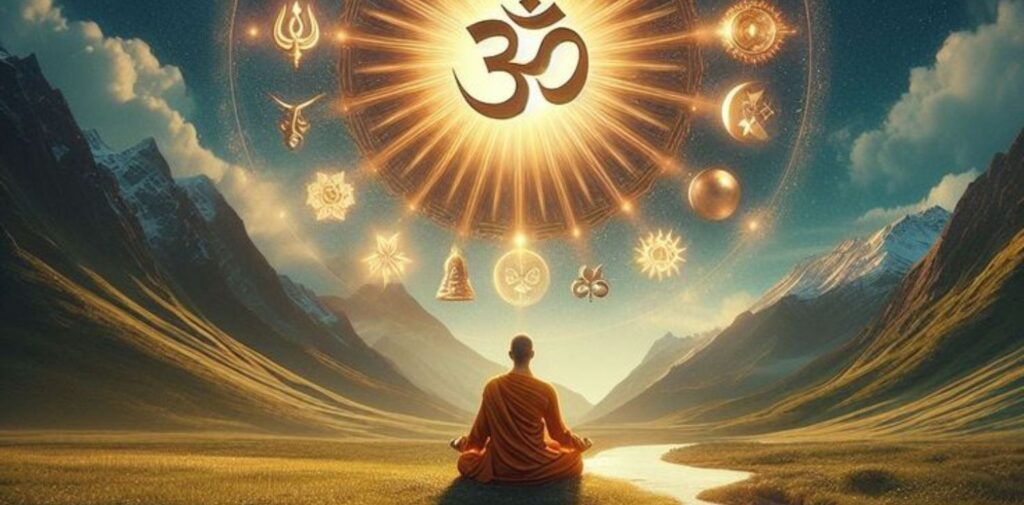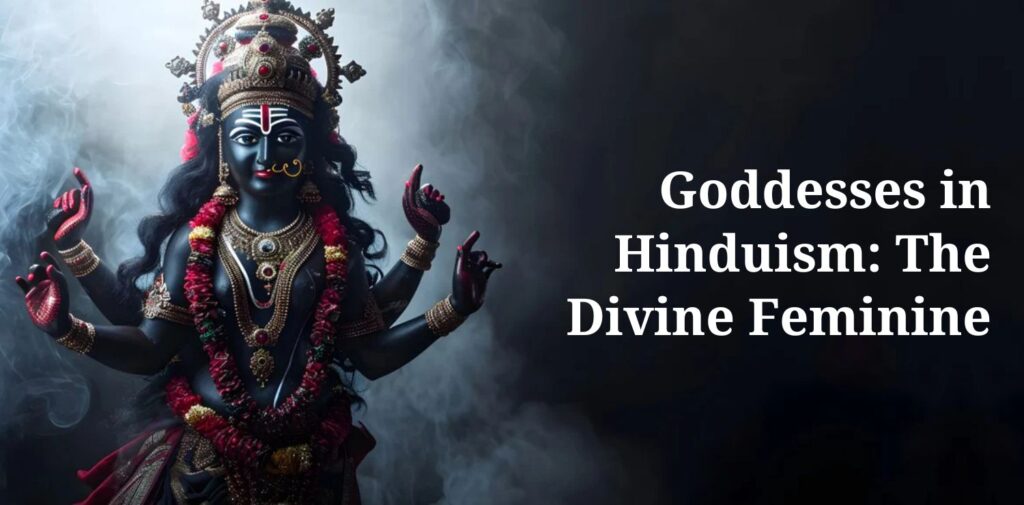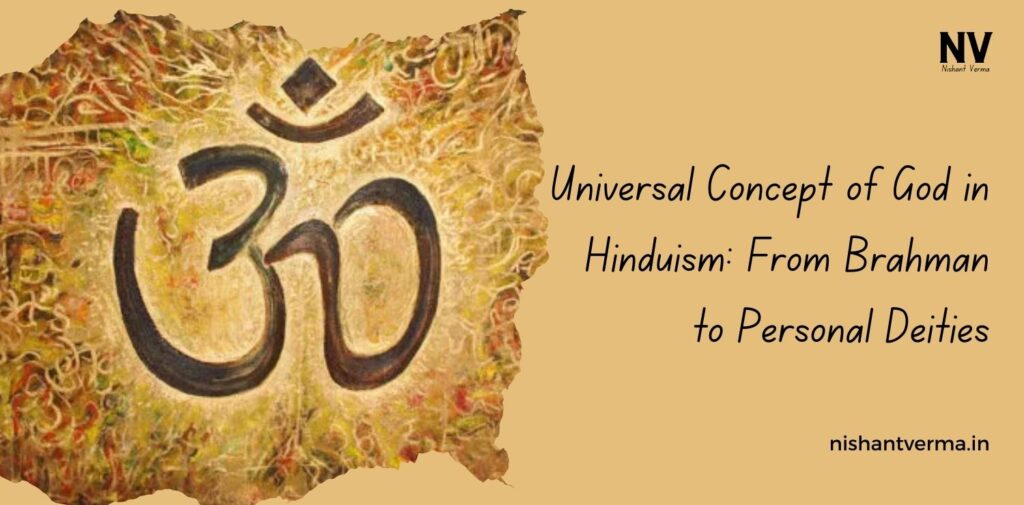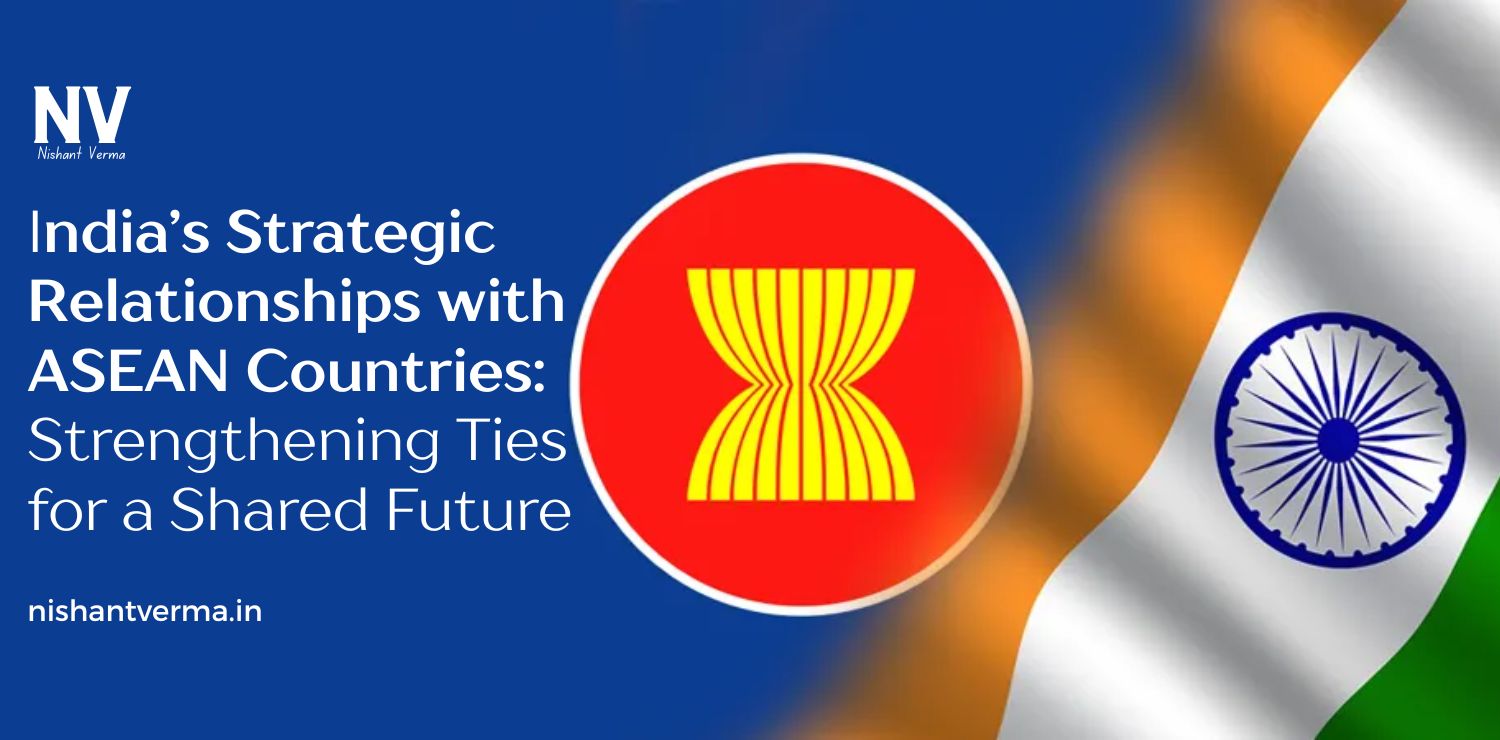Hinduism, one of the oldest and most diverse religions in the world, offers a rich and complex understanding of the concept of God. Unlike many other religions that focus on a single personal god, Hinduism recognizes the Divine in a variety of forms, from the formless, eternal Brahman to personal gods and goddesses with distinct personalities and stories. This broad view of God allows followers of Hinduism to connect with the Divine in many different ways, depending on their spiritual needs, personal preferences, and cultural backgrounds.
In this article, we will explore the universal concept of God in Hinduism, starting with the concept of Brahman, the formless, all-encompassing reality, and then move on to the many personal deities worshipped by Hindus today.
Understanding Brahman: The Ultimate Reality
At the heart of Hindu philosophy lies the concept of Brahman, the ultimate reality or supreme cosmic power. Brahman is considered formless, infinite, and beyond human comprehension. It is not a personal god or a deity with a specific name, form, or attributes. Rather, Brahman is the unchanging, eternal source of all creation, the underlying essence that connects everything in the universe.
Brahman is described in the Upanishads—ancient texts that form the philosophical foundation of Hinduism—as being beyond all human limitations. It is not something that can be seen, touched, or fully understood. This is the essence of all that exists, both seen and unseen, and is present in every particle of the universe.
The famous phrase from the Upanishads, “Tat Tvam Asi” (Thou art that), encapsulates the idea that Brahman is not separate from us. It is the very essence of life and consciousness within each individual. This belief in the oneness of Brahman and the individual soul (Atman) is central to the spiritual path of jnana yoga (the path of knowledge) and advaita vedanta (the non-dualistic school of Hindu philosophy).

The Nature of Brahman: Impersonal and Personal
While Brahman is often described as impersonal, beyond attributes or qualities, Hinduism also teaches that the Divine can be experienced in personal forms. This dual understanding of Brahman as both impersonal and personal is a unique feature of Hindu thought.
On one hand, Brahman is understood as nirguna (without qualities) and nirakara (without form). It is beyond all distinctions—there is no differentiation of gender, caste, race, or species in Brahman. It is the infinite, eternal reality that transcends time and space.
On the other hand, Brahman can also be viewed as saguna (with qualities) and sakara (with form). In this form, Brahman takes on various divine attributes that make it accessible and relatable to human beings. This is where the concept of personal deities comes into play.

Personal Deities in Hinduism: Connecting with the Divine
While Brahman represents the highest and most abstract conception of God, Hinduism also recognizes a multitude of personal deities that embody different aspects of the Divine. These deities, often depicted with specific forms, names, and attributes, are worshipped by millions of Hindus worldwide. The worship of these personal gods provides a more tangible way for individuals to connect with the Divine in their everyday lives.
The primary deities in Hinduism belong to three major divine aspects, often referred to as the Trimurti—the three divine manifestations of God that govern creation, preservation, and destruction:
- Brahma (The Creator)
- Vishnu (The Preserver)
- Shiva (The Destroyer)
Each of these deities represents a different aspect of the Divine and is worshipped by followers who focus on their specific qualities and characteristics.
Brahma: The Creator
Brahma is the god of creation, and he is often depicted with four faces, symbolizing the four Vedas (the sacred texts of Hinduism) and the idea of all-encompassing knowledge. Brahma’s role is to create the universe and everything within it. However, despite his important role in the cosmic cycle, Brahma is not as widely worshipped as Vishnu or Shiva. In fact, there are very few temples dedicated to Brahma, and most Hindus focus their worship on other deities.
Vishnu: The Preserver
Vishnu is the god of preservation and protection, ensuring the stability of the universe. He is often depicted with a serene and compassionate expression, and his followers believe that he incarnates on Earth in various forms, called avatars, to restore balance and destroy evil.
The most famous avatars of Vishnu are:
- Rama, the hero of the epic Ramayana, who is depicted as the ideal king and embodiment of righteousness.
- Krishna, a playful and wise deity who is central to the epic Mahabharata and the spiritual teachings of the Bhagavad Gita.
Vishnu’s followers believe that he takes these avatars to guide humanity and protect it from evil forces. Worship of Vishnu often involves chanting mantras, offering prayers, and participating in festivals such as Diwali (the festival of lights), which celebrates the victory of light over darkness and good over evil.
Shiva: The Destroyer
Shiva is the god of destruction, but his role is not negative. In Hindu cosmology, destruction is necessary for creation to occur. Shiva’s destruction allows for the cycle of rebirth and renewal in the universe. He is often depicted as a meditative ascetic, sitting in deep meditation on Mount Kailash, or as the Nataraja, the cosmic dancer, symbolizing the endless cycle of creation, preservation, and destruction.
Shiva is also revered as a god of compassion and mercy, and many Hindus worship him as a source of liberation from the cycle of birth and death (samsara). He is often invoked in the form of the lingam, a symbol representing his infinite and formless nature. Major festivals like Mahashivaratri celebrate the worship of Shiva with fasting, prayer, and night vigils.

Goddesses in Hinduism: The Divine Feminine
In addition to these male gods, Hinduism also venerates a number of powerful goddesses, who represent different aspects of the Divine feminine energy, or Shakti. These goddesses are worshipped in their own right and are considered essential for the balance of the universe. Some of the most widely worshipped goddesses include:
- Durga: The warrior goddess, symbolizing strength and protection. She is often depicted riding a lion and carrying weapons, ready to fight evil forces.
- Lakshmi: The goddess of wealth, prosperity, and beauty, who is often depicted as sitting on a lotus flower.
- Saraswati: The goddess of knowledge, music, and wisdom, often depicted playing a veena (a musical instrument).
The worship of goddesses in Hinduism is a reminder of the power of feminine energy and its essential role in maintaining the balance of the cosmos.
The Concept of God in Hinduism: A Personal Journey
Hinduism allows each individual to relate to God in a way that is meaningful to them. For some, the abstract idea of Brahman, the formless, eternal reality, is enough to inspire devotion. For others, a more personal connection to gods like Vishnu, Shiva, or Lakshmi provides a concrete way to experience the Divine.
The diversity of divine forms in Hinduism reflects the belief that no one way is right for everyone. Whether through meditation on Brahman, devotion to a personal god, or service to the divine feminine, the ultimate goal in Hinduism is to realize the presence of the Divine in every aspect of life.
Conclusion: Unity in Diversity
The concept of God in Hinduism is unique because it encompasses both the formless, all-encompassing Brahman and the many personal deities that individuals can worship. This diversity allows Hindus to choose the path of devotion that resonates most with them, whether they seek the infinite and impersonal or the personal and approachable. In this way, Hinduism teaches that the Divine can be experienced in many forms, but it is always one and the same.
The ultimate message of Hinduism’s universal concept of God is one of unity in diversity, showing that all paths lead to the same truth: the Divine is present in everything, and the goal of life is to recognize this oneness with the universe and all of creation.




